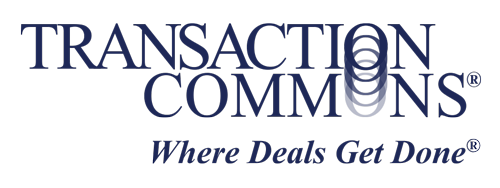Walk Before You Run: Transaction Efficiency Before Blockchain

For years there has been interest in streamlined transactions through electronic document signing, e-closings, and completely paperless transaction processes. The act of physically signing a document has been cast as antiquated and wasteful. Now the interest in this topic has accelerated with frequent media attention to broad applications of blockchain technology and its potential place in the future of business transactions. We agree that the future holds exciting potential for transaction efficiency. But today, a lot of transaction efficiency is lost well before the signing of documents and closing the transaction.
The emphasis on e-signing capability often seems to envision a world in which the documents presented to the parties are promptly signed. If the documents are reviewed, they are read online and are not changed (which makes you wonder if they are read at all). But in any significant transaction there is some, and often extensive, negotiation and revision of the transaction documents. There is also a meaningful amount of due diligence review which involves the delivery and analysis of documents and information. In those transactions with intense due diligence and extensive document review and negotiation, the time involved in obtaining physical signatures, or even the more significant time involved in a face-to-face meeting for a traditional “closing,“ is a tiny fraction of the total time spent on the transaction.
More importantly, we believe that the extra time involved in a physical document signing is also a small fraction of the time wasted because of transaction inefficiencies that occur before the signing. And those inefficiencies aren’t solved by blockchain technology. There is more to be gained today by fixing other (and simpler) sources of inefficiency before investing time and effort in e-signing or e-closing technology, let alone blockchain technology.
Today the primary source of transaction inefficiency is disorganization and poor communication. The current process that deserves the most scrutiny is the widespread use of email in the transaction process. It is the time wasted looking through a cluttered email inbox for the right draft of the document, or reviewing, discussing and revising a draft that isn’t the current version. It is also the time spent getting a new transaction participant up to speed, both on the due diligence information and the document negotiation history. Searching your email and finding and forwarding a series of old emails is a poor solution. Transaction Commons solves these issues by allowing all transaction participants access to a repository for the due diligence information and a space for organizing and tracking the evolving versions of the negotiated documents.
While it is interesting and important to look to the future of technology, transaction parties should first put in place currently available improvements in transaction processes. These improvements can lead to real and immediate efficiency gains. For example, Transaction Commons provides an organized alternative to email but without requiring any of the transaction parties to implement intrusive technological changes or incur significant costs.
So before running to emerging blockchain and e-signing technology for your complex business transactions, climb out of the current abyss of disorganized email and walk towards a more efficient transaction. You will save time and money, even if the parties end up picking up a pen (how primitive!) and physically signing the final documents. You can always scan them after they’re signed and share or archive them as needed, ideally by uploading the signed documents to Transaction Commons!
